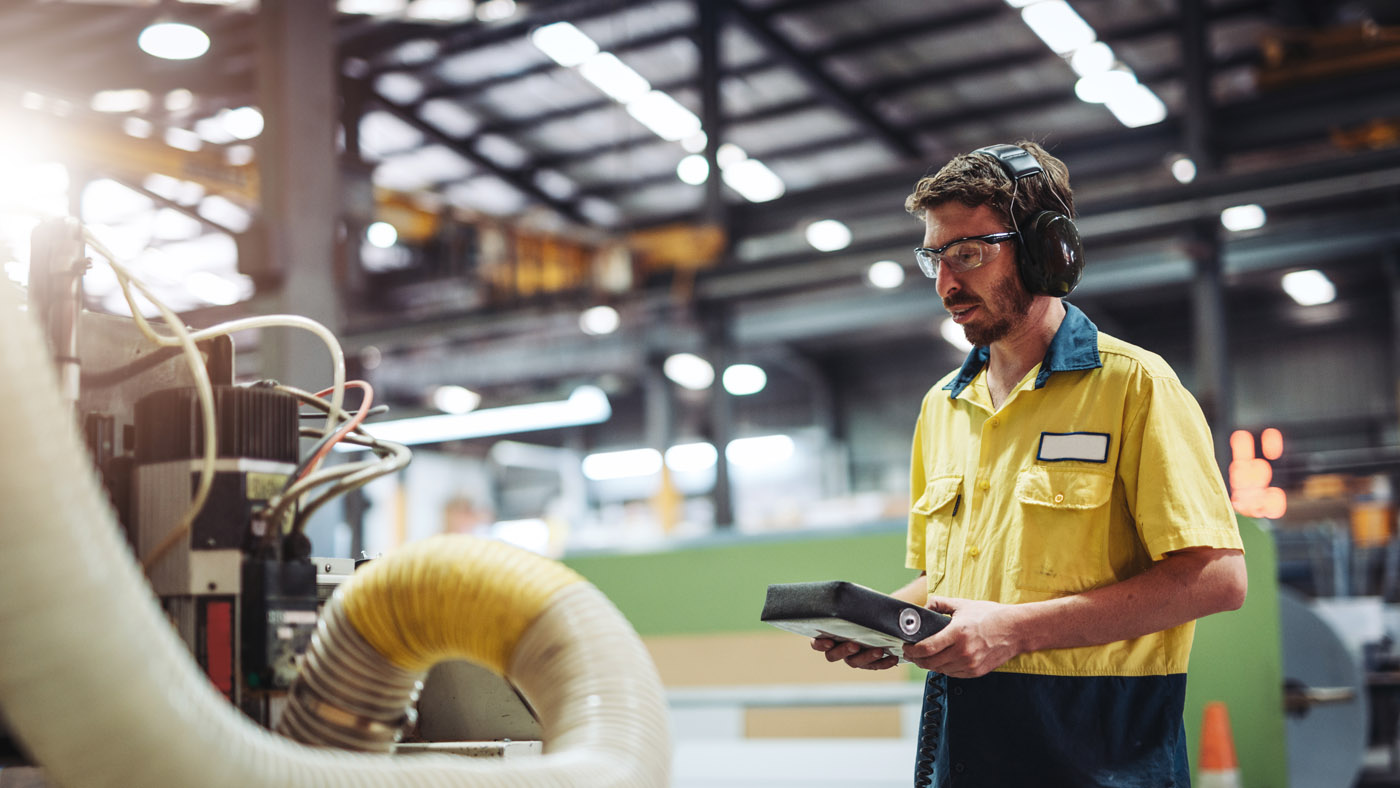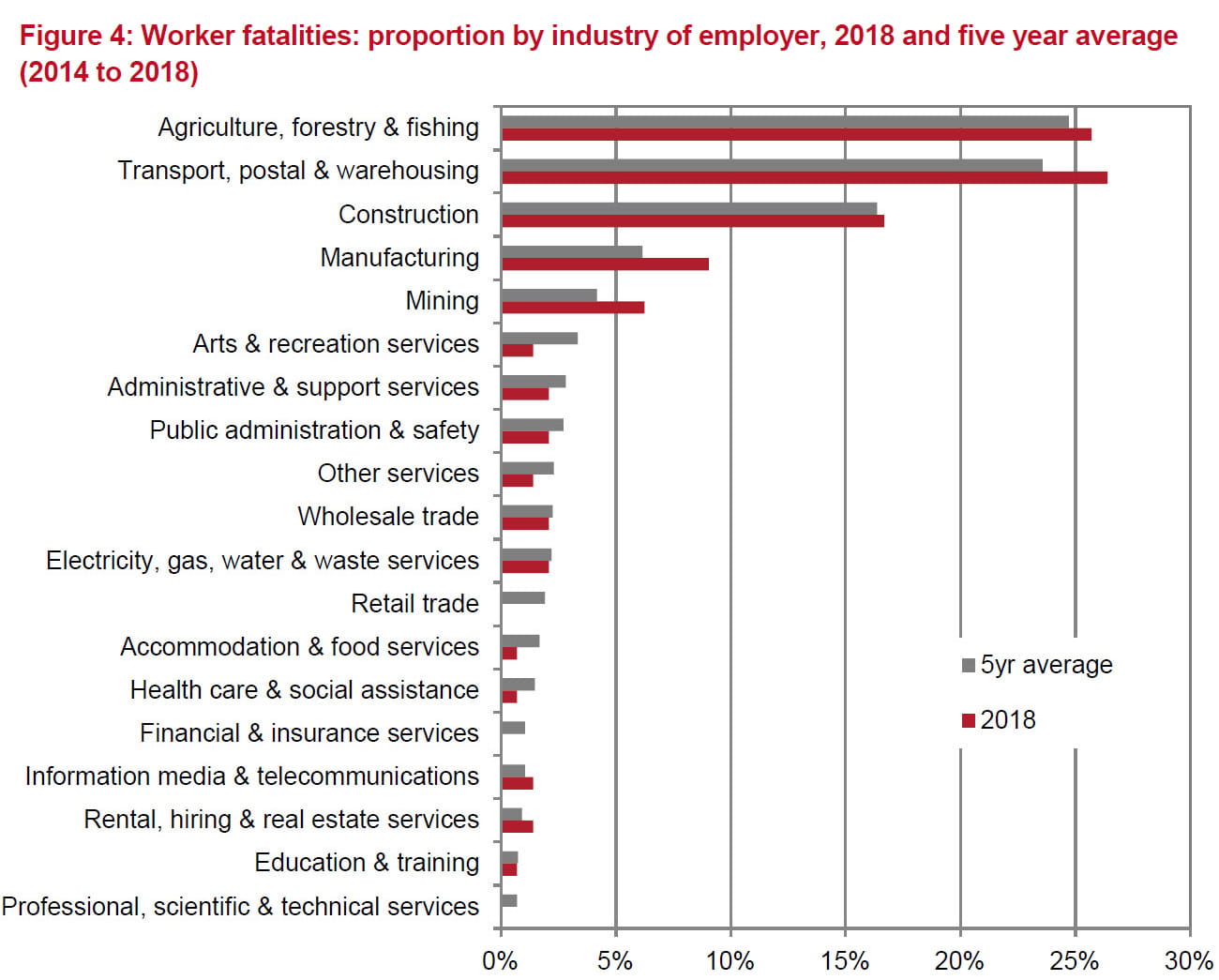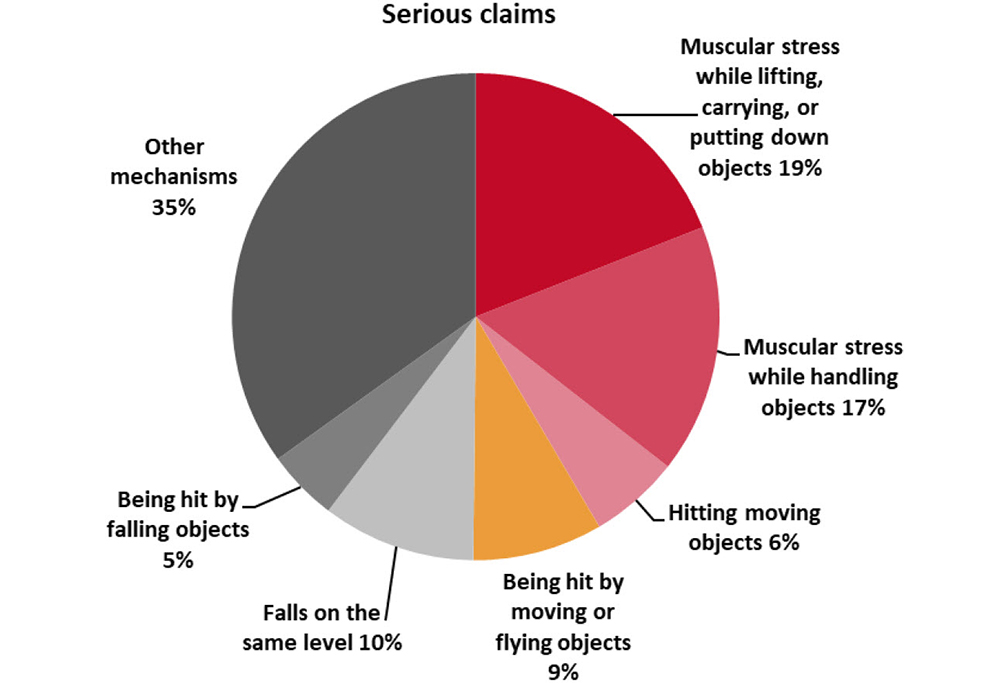Complacency and inattention may be your biggest risks
Did you know that manufacturing has been identified as one of seven national priority industries to reduce the number and rates of fatalities and serious injuries?

Manufacturing was identified as part of the Australian Work Health and Safety Strategy 2012-2022.
After nearly two years of consultation with work health and safety regulators, unions, industry associations, employer organisations and the general public, the strategy is reinforced by two key principles:
- All workers regardless of their occupation or how they are engaged have the right to a healthy and safe working environment
- Well-designed healthy and safe work will allow workers in Australia to have more productive working lives.
Traumatic joint and muscle injuries account for 32 per cent of manufacturing workplace injuries, followed by wounds and lacerations making up 31 per cent of injuries (Policy Renewal Year 2018/2019).
It is critical that all possible distractions are removed at work to ensure employees give their full attention whilst performing their roles. If workers are distracted, this can lead to mistakes which then could lead to serious injuries and the worst-case scenario, a fatality.
The Safe Work Australia's (SWA) Work-related traumatic injury fatalities Australia 2018 publication shows that manufacturing is fourth on the list for worker fatalities, behind the top three of agriculture, forestry and fishing, transport, postal and warehousing, and construction.

From Safe Work Australia's Work-related traumatic injury fatalities Australia 2018
The SWA website shows year to date figures up to 8 October 2020 where there was an additional fatality in the manufacturing sector in both 2019 and 2020.
Your role as an employer is to ensure your workers not only perform at their best but also at their safest, and this means minimising possible distractions as low as is reasonably practicable.
Being safe requires a focused mind
We all experience different mental states at work, such as:
- fatigue – physical and mental
- worry
- stress
- frustration
- rushing or feeling under pressure.
Another can be complacency, the silent killer of success for a business. This involves organisational safety where a business has the belief that they are achieving success, without ensuring that they are.
Complacency can become physically dangerous where an employee can get overly accustomed to the repetitive nature of how things are done. The routine involved in a task may cause them to underestimate the risk involved with dangerous tasks that are carried out on a regular basis.
Finally, complacency can be found, often too late, with an employee who is burned out, has lost trust in the organisation, shows signs of disinterest, cuts corners, acts disgruntled and resists change.
These varying mental states can be very distracting, taking our attention away from our work. However, it is important to realise that inattention not only impacts your own individual safety but can also have a direct effect on your colleagues' safety, too.
In the manufacturing industry, there is an increased exposure to risk as you are working with dangerous machinery and equipment as well as being exposed more to slips, trips and falls.

Safe Work Australia's Manufacturing: Priority industry snapshots (2018)
No doubt, inattention—when our eyes and minds are not on the task—increases risk of injury. Performing a job well requires focus. This means bringing our minds back to what we're doing when we're distracted.
Steps workers and employers can take to create a safe workplace include:
- eliminating hazards, using barriers and safety equipment
- regular consultation with workers to ensure that the employer is in touch with the workers and operational activities undertaken
- It is also extremely important to ensure all workers are properly trained, with the training being relevant to the risks involved with the tasks being undertaken
- Within the manufacturing industry it is also important to take enough breaks and avoid repetitive movements as performing repetitive movements whilst also being inattentive can lead to strains and other injuries.
- Even when we have good safety procedures in place, it can be impossible to totally remove risk, but clear safety procedures that are understood well by workers can help prevent injuries from occurring.
Common distractions in the workplace
- rushing, or feeling under pressure to get something done quickly
- fatigue
- phones and mobile devices
- loud music or use of headphones
- mental distractions, like thinking, worrying or daydreaming
- chatting with colleagues while doing a dangerous task such as mixing chemicals or climbing a ladder
- trying to do different things at the same time.
What you as an employer can do to create a safer working environment
Employers and employees should work together to reduce the risk and impact of distraction and inattention in the workplace. As an employer, here's what you can do:
- Have regular toolbox meetings where safety can be discussed openly and honestly, build trust.
- Consider using the PErforM approach to effectively manage your specific hazardous manual tasks.
- Allow and encourage short rest breaks, where workers can move around and increase blood flow.
- Offer attention improvement programs: these include explaining how mistakes are made through inattention, and practical exercises to improve personal safety skills and habits.
- Encourage a culture of mindfulness in the workplace, including practising mindfulness techniques
- Take steps to minimise worker fatigue.
- Support employees to manage any stress they're experiencing outside the workplace.
- Make sure supervisors keep an eye out for workers who might be distracted. This should be a part of the normal working day and be used to encourage people to 'come back' to the task at hand. Be careful to avoid blame and hostility, this in itself is a distraction.
- If possible, set up the workplace so employees have varied tasks. Periodically moving from one task to another can encourage alertness.
At the end of the day, it is essential that you as an employer help your workers minimise distractions around them so they can perform their roles safely, with their full attention. This will lead to less injuries and create a safer and happier working environment for everyone.

